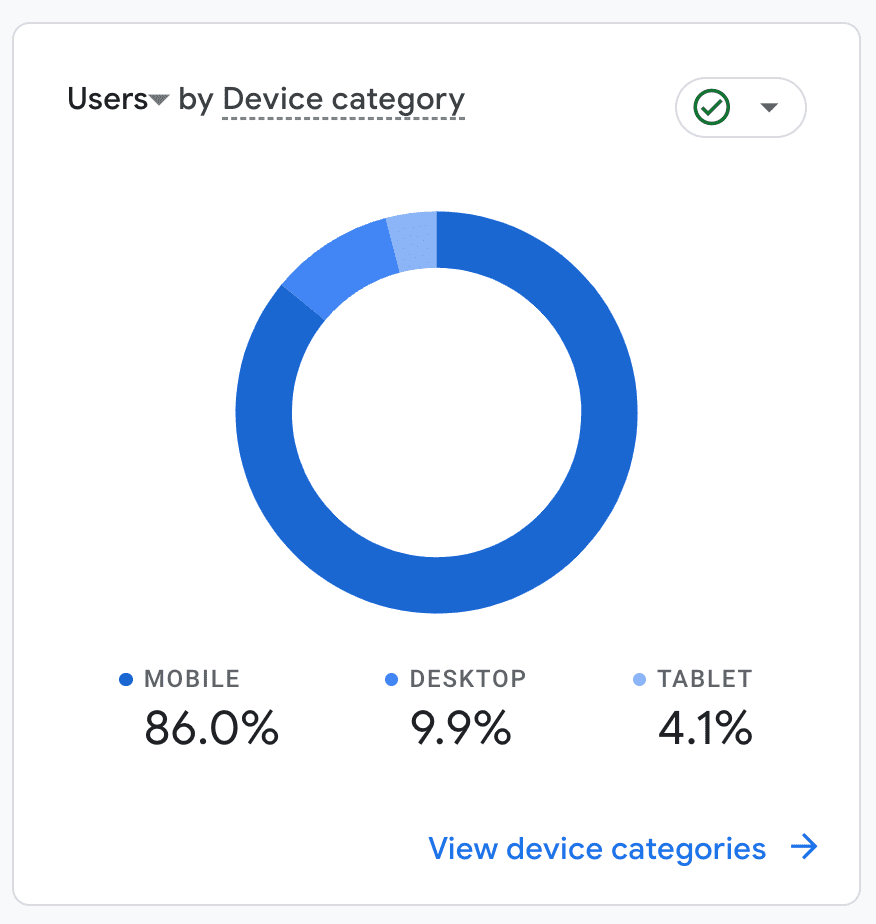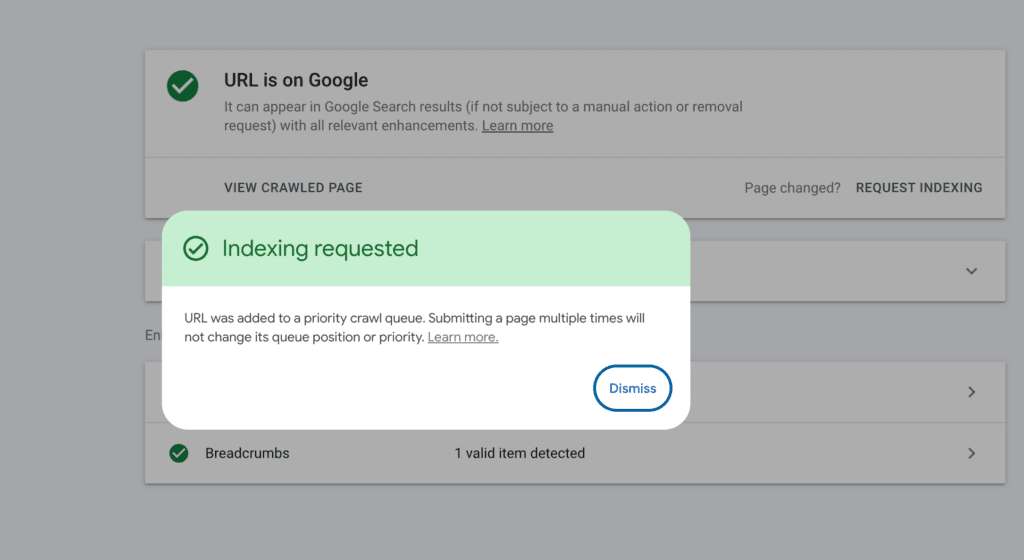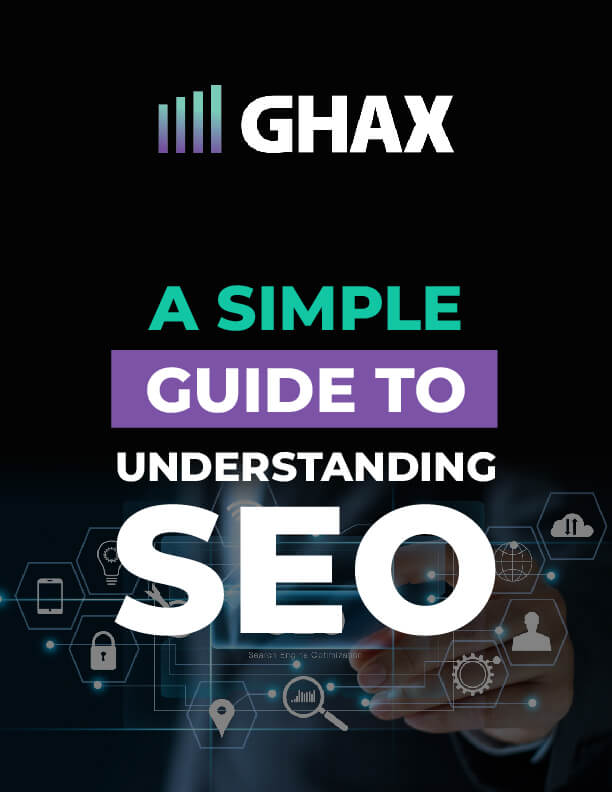If you’re looking to set new sales records for your eCommerce site, this video will go over how to rank your online store to do just that.
I’m sure you’ve heard the success stories, dreams of ranking at the top of Google’s Page 1, and turning your site into a 24/7 sales machine.
But let’s be honest, the path to achieving this is a mystery to most.
And today, I’m going to clear it all up for you.
I’m Antonio Calabrese with GHAX Digital, and today, we’re going to crack the code to top rankings on Google for eComm sites.
No fluff.
No spending on ads.
Just straight-up what you need to do to achieve real results.
If you implement the tactics in this video, you’ll be well on your way to dominating search, making more sales, and establishing yourself as the top competitor.
Let’s dive in.
The first thing you need to do is get your foundation fixed.
This means, getting your technicals in order.
It’s not the most glamorous part of SEO, but you need to do it, even if it’s just the basics – such as addressing broken links, any slow page load times, and odd URL structures.
Let’s review what you should be doing… at a minimum.
The first is broken links.
These links are the dead ends of the internet. If you’ve ever landed on a 404 page, you know what I’m talking about.
They frustrate your customers and also tell search engines that your site might not be the best resource… which can negatively impact your rankings.
Using premium tools like Ahrefs or SEMrush, you can spot and fix these issues. You can also use Google Search Console for some of this if you’re on a budget.
If you have a broken outgoing link, remove the link or change it…
and if you have a broken incoming link, reach out to that site and ask them to update it.
Any 404 pages on your own site, should be 301 redirected.
Use a WordPress plugin or Shopify app to easily handle 301’s.
The second step is to address your page load speed.
Because more so than ever, speed wins. If your site takes longer to load than it does for a visitor to lose interest, you’ve already lost the sale.
You need to optimize images, leverage browser caching, and minimize JavaScript.
These small changes can lead to significant speed boosts.

And in most cases, a speed optimization plugin or app can address these issues for you in just a couple of clicks.
Third, optimize URL structure. You want to keep your URLs short and descriptive. A clear URL structure not only helps users navigate your site but also helps search engines understand and rank your pages.
Don’t forget, if you change an existing URL, you’ll want to set up a 301 redirect to avoid breaking links and losing page rank.
The fourth step is to Submit an XML Sitemap to Google Search Console
An XML sitemap is like a map you give to Google, showing all of the pages that your site has.
Submitting your sitemap through Google Search Console helps ensure that Google knows about all your pages, including new content, making it easier to index and rank your site.
Next you want to Ensure All Pages on your site Have an H1… Your H1 tag is what tells Google what the page is about right away. Every page needs one, and it should be clear, relevant, and keyword-focused.
Step 6: Make sure your site is user-friendly on mobile
Most of the traffic today comes from mobile devices (just check your analytics).

So if your site isn’t properly optimized for mobile, you’re likely providing a poor user experience.
And a poor user experience will lead to a lower conversion rate and a drop in search rankings.
These first 6 steps ensure a solid foundation. Once you’ve completed these, you’ll want to move your focus to:
- promoting your product category (or “collection”) pages
- creating content
- and building links
Although individual product pages are important, your product category pages make more sense to target.
These pages pull in search traffic with a broader set of keywords that individual product pages might not rank for.
Plus, optimizing a few category pages is more manageable and can have a wider impact than optimizing hundreds of individual product pages.
Here are your next action steps:
Add 300-500 Words of Content to Each Product Category Page
Remember, content matters, even in eComm. Adding descriptive, valuable content to your category pages not only helps with SEO but also guides your customers through their buying journey.
This content should highlight what the category offers and how your products stand out.
Add the Main Product Category Pages to the Main Navigation Menu
Adding these categories in your main navigation menu does more than improve site architecture; it boosts the SEO value of these pages and enhances user experience.
When customers can find what they need faster, they’re more likely to convert, and search engines will take note of these positive interactions.
Create Content Around Topics That Pertain to Your Products and Industry
This could be blog posts, buying guides, or how-to articles.
This type of content attracts potential customers who are not yet ready to buy but are seeking information.
By providing value through content, you’re building trust, and when they’re ready to purchase, your site will be top of mind.
For example, if you sell outdoor gear, writing about “The 10 Most Advanced Hiking Trails in the U.S.” not only attracts readers interested in hiking but also seamlessly ties back to your product collections.
This approach boosts engagement, keeps your audience on your site longer, and, when done right, gently nudges them towards making a purchase.
While you’re on content, be sure to update any blog content that might be outdated.
Look at your Google Search Console or analytics and find article URLs that used to rank and bring in traffic, but are now suffering.
If it ranked before, there’s a chance to revive it by updating statistics, adding fresh insights, and refining your messaging.
This not only keeps your content relevant but also shows search engines that your site is actively maintained.
You’ll also want to spend time adding internal links.
When you’re creating or updating content, look for opportunities to link back to your main product category pages, other blog content, or even individual products.
This strategy keeps users engaged, reduces bounce rates, and spreads page authority across your site.
For example, in a blog post about the latest outdoor gear trends, link to your outdoor gear category page when you mention products that fit these trends.
It’s a natural way to guide readers from engaging content to your product pages.
Once you publish or update content, submit it to Google Search Console.

Resubmitting your sitemap or using Google Search Console to notify Google of these updates can help speed up the indexing process.
This step isn’t necessary, but again, it can speed up the process.
The last piece of the puzzle is to build high-quality backlinks.
Backlinks will signal to Google that you’re a trusted source for information and products – so don’t skip this step.
You’ll want to build backlinks to your homepage, blog content, and product category pages.
You can build these links through guest posting, partnerships, or creating shareable content that naturally attracts links.
Just remember that as you’re doing this, the quality of backlinks is far more important than quantity; a few strong links from reputable sites can have a much greater impact than many links from lesser-known sources.
Let’s look a bit deeper into how you can build these links.
Option 1: Guest Posting
The way this works is simple…
Find websites within your industry that have an active blog – ideally, one that ranks highly in Google.
Make contact through the site, asking if you can contribute a guest post. If they agree, suggest article titles that are relevant to their audience.
Once they agree on a topic, write the article, include a link back to your website within the content, and submit it back to them for posting.
Once they post the article, you’ll have a fresh new backlink.
Option 2: Create Shareable Content
Creating shareable content means blending valuable information with engaging storytelling. The goal is to craft articles, infographics, videos, or interactive tools that not only resonate with your audience but also encourage them to share with their own networks.
This content should solve a problem, answer a question, or provide insights that are not easily found elsewhere.
For example, if you’re in the fashion industry, an infographic on “The Evolution of Fashion Trends Over the Decades” could spark interest and earn shares across social media platforms.
Shareable content naturally attracts backlinks as it’s circulated online, boosting your site’s visibility and authority.
Option 3: Participate in Industry Forums and Communities
By actively participating in discussions, offering expert advice, and sharing insights, you establish yourself and your brand as authoritative figures within your niche.
This doesn’t mean simply dropping links to your site or spamming these communities…
It means focusing on providing value and building relationships with other members.
Over time, this genuine engagement will lead to natural opportunities to reference your content where it adds value to the conversation, encouraging organic backlinks and direct traffic to your site.
Option 4: Collaborate with Influencers and Other Brands within your industry
Doing this can open up new avenues for backlink generation. Co-creating content, whether it’s blog posts, podcasts, or video series, with influencers or brands that share a complementary audience can be mutually beneficial.
Not only does this strategy help in reaching a wider audience, but it also adds credibility to your content, encouraging shares and backlinks.
Option 5: Utilize Reputable Directories and Resource Lists
Start by identifying directories that are relevant to your industry and ensure they hold a good reputation to avoid any negative SEO impacts, as low quality directories and lists can have the opposite effect.
Reach out to the curators with a compelling reason why your site or specific content should be included, focusing on the value it would add to their audience.
And that’s exactly how you can rank your ecomm website using SEO tactics that actually work.
If you need help driving more sales, growing your business, and becoming the top player in your industry, then book a call with us here.
Also, if you’ve enjoyed this video, consider leaving a like and subscribing. I’ll see you in the next one.




